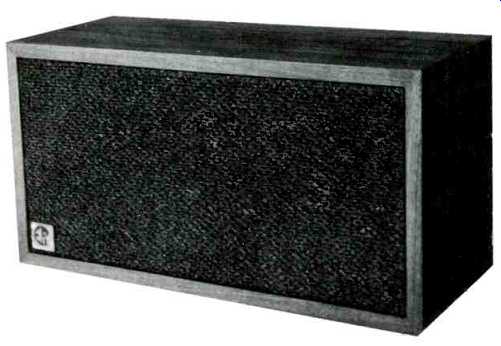
MANUFACTURER'S SPECIFICATIONS:
Usable response: 30-18,000 Hz.
Omnidirectional response: 40-13,000 Hz ± 3 dB
Minimum Amplifier Power Required: 18 Watts rms.
Recommended Maximum Power: 60 Watts rms.
Impedance: 8 ohms.
Harmonic Distortion: Less than 5% at all frequencies.
Cabinet Size: 21" x 11" x 9".
Price: $89.00.
EPI is a new name to add to the list of speaker manufacturers. And the Model 100 certainly is a fine opening number.
It is the smallest and least expensive of four available systems, each of which utilizes identical components but in varying quantities. The Model 100 consists of one woofer/tweeter module. The Model 201 has two, the Model 500 has four, as has the "Tower" Model 1000, but one on each surface.
Having found the right "combination" to the acoustic balance problem, Epicure's modular approach is economical and logical. If the performance of the Model 100 is representative of the others, as it probably is, then we can look forward to a popular new line of speakers.
The Model 100 system is small, light, and truly of bookshelf dimensions. It weighs under 20 pounds. It puts out surprisingly big sound, is a little more efficient than units of similar size, and ranks high on our list of bookshelf systems. Each speaker comes with its own frequency response chart and a 10-year guarantee which includes shipping.
One of the engaging features of the system is its simplicity, which includes two design features. One is the acoustic suspension tweeter and the other is the capacitive crossover network. The tweeter is 1" in diameter, which is small and therefore capable of very wide high-frequency dispersion. In order to produce appreciable power at high frequencies, rather than make a larger and more directional tweeter, EPI has allowed for large tweeter excursions, using a miniature acoustic-suspension design for the tweeter.
The top of the magnet structure is hollowed out to form a small cavity against which the cone works on a 1/4" air cushion. The voice coil and tweeter cone are rigidly interlocked and supported with a rubber-impregnated-cloth surround, the purpose of which is to damp out resonances while allowing freedom of motion.
An 8" high-compliance woofer with a 18-gram voice coil 3/4" long in a 1/4" magnetic gap covers the frequency range below 1800 Hz. The woofer has a free air resonance of 18 Hz and in its acoustic suspension enclosure, produces sound down to 40 Hz. The long voice coil and 200% overhang allows a large 1/2" excursion.
The crossover network which electrically separates the drivers from each other and from the power amplifier, is not present in this unit. What is used here is simply an 8-pF 50-volt capacitor in series with the tweeter. Epicure feels that this is an effective and economical solution, eliminating phase shift problems caused by complex inductive and capacitive networks traditionally used. The woofer is apparently insensitive to high frequencies which are fed to it and in combination with this simple cross-over system provides the 18-dB/octave attenuation.
Both speakers and capacitor are mounted from the rear of the front panel.
The front panels of our test samples worked themselves loose and had to be glued back. The cabinet is stuffed with fiberglass. Speaker terminals are recessed at the rear. No controls or attenuators are provided to alter the tweeter/woofer balance. The cabinet comes finished on four sides in oiled walnut with light beige grille cloth in front.
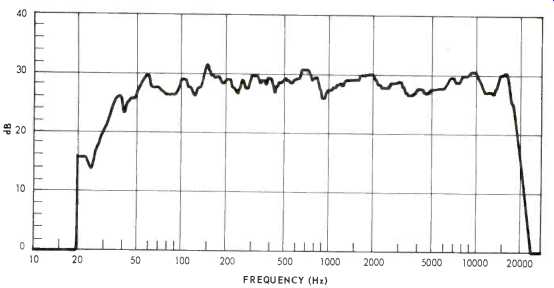
Fig. 1-Frequency response curve (supplied by the manufacturer).
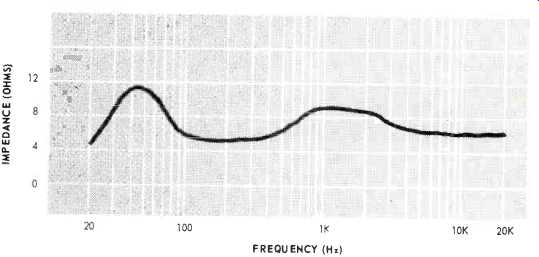
Fig. 2-Impedance curve.
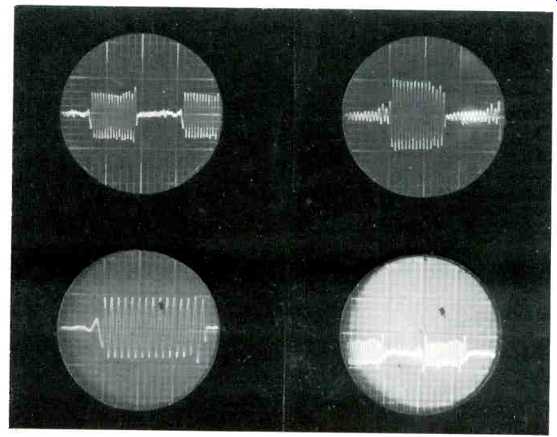
Fig. 3-Tone burst response at (a) 1500 Hz, (b) 1800 Hz, (c) 5000 Hz, (d) 10,000
Hz.
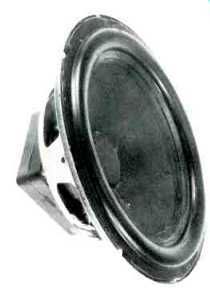
Fig. 4--Showing bass speaker used in the EPI-100. Note the large double magnet.
Our frequency-response tests, using 1h-octave-band pink noise, pretty well confirmed the manufacturer's data, although we could not duplicate the frequency-response curve supplied with the units, as the curve was doubtless plotted in anechoic test conditions. The manufacturer's curve is shown in Fig. 1. We did obtain a smooth response of 55 to 15,000 Hz nevertheless, with exceptionally fine dispersion and excellent transient response, as shown in Fig. 3. Dispersion remained excellent up to 11 kHz at which point the higher frequencies became more directional and rolled off from 15 kHz.
The bass rolled off sharply below 45 Hz and a small amount of doubling became evident at 70 Hz but this did not increase significantly at the lower frequencies. The impedance curve is shown in Fig. 2.
Listening tests confirmed the transient response capability, making percussion sounds come alive and practically omnidirectional. We found we could play the thing louder than one would think possible from its size. The sound was uncolored and open, and the stereo image remained solid at all times. The bass lacked the very bottom which is the fundamental on certain musical items, but on most material, that didn't matter.
We were impressed with the quality of sound it produced when fed from a good program source.
In order to have adequate reserve power for good transient response of reasonable listening levels, we recommend as a minimum, a 30-watts-per channel amplifier to drive the speaker system properly.
-A. R.
(adapted from Audio magazine, May 1970)
Also see:
EPI 601 Speaker Systems (Jan. 1973)
Onkyo Model 20 speaker system (Jan. 1973)
ESS Mk VII Speaker System (Equip. Profile, Jan. 1973)
Epicure Model One Power Amplifier (Nov. 1975)
= = = =